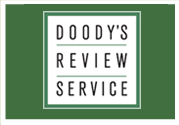|
|
|
eBook/Digital Version available from:
|
 Score: 95
Score: 95 |
 |
| The American Psychiatric Publishing Textbook of Mood Disorders, 2nd Edition |
 |
|
Doody's Core Title (2025 Edition)
|
 |
| Score(s): |
|
2.2
(Health Sciences - Psychiatry)
|
|
 |
ISBN: 978-1-61537-331-4,
946 pages,
Hard Cover
ISBN-10: 1-61537-331-4 |
 |
| Copyright: |
2022 |
 |
| Edition: |
2nd |
 |
| Editor: |
Nemeroff, Charles B., MD, PhD; Rasgon, Natalie, MD, PhD; Schatzberg, Alan F., MD; Strakowski, Stephen M., MD |
 |
|
Specialties:
|
Psychiatry |
 |
| Publisher: |
American Psychiatric Association Publishing |
|
800 Maine Avenue, S.W. |
|
Suite 900 |
|
Washington, DC 20024 |
|
UNITED STATES |
|
P: 800-368-5777
F: appi@psych.org |
|
http://www.appi.org |
 |
| List Price: |
$195.00 |
 |
| Google: |
|
|
 |
|
|
|
|
At A Glance
|
This new edition of The American Psychiatric Association Publishing Textbook of Mood Disorders is a systematic and painstaking reconceptualization of its predecessor. Under new editorial direction and with a revised roster of expert contributors, the second edition is an utterly current, clinically competent, and comprehensive text that will become an instant classic. The book is structured for learning and easy reference, moving deftly from symptomatology and epidemiology to pathogenesis and on to somatic interventions, cognitive-behavioral interventions, and psychotherapy. The latest science on genetics and epigenetics, brain imaging, and neurobiology are also examined in depth. Critically important to the clinician is the section on management of mood disorders, which provides treatment guidelines for major depressive disorder and bipolar disorder, as well as information on understanding, and preventing, suicide in children, adolescents, and adults. Finally, perspectives are offered on depression among women, children, and geriatric patients, as well as on depression across cultures. Practicing psychiatrists, residents, and students alike will benefit from the book's inclusive coverage. Learn more and order here.
|
|
Reviewer:
|
Michael Easton,
MD
(Rush University Medical Center)
|
 |
|
Range
|
Question
|
Score
|
| 1-10 |
Are the author's objectives met? |
10 |
| 1-10 |
Rate the worthiness of those objectives. |
10 |
| 1-5 |
Is this written at an appropriate level? |
5 |
| 1-5 |
Is there significant duplication? (1=significant, 5=insignificant) |
4 |
| 1-5 |
Are there significant omissions? (1=significant, 5=insignificant) |
4 |
| 1-5 |
Rate the authority of the authors. |
5 |
| 1-5 |
Are there sufficient illustrations? |
N/A |
| 1-5 |
Rate the pedagogic value of the illustrations. |
N/A |
| 1-5 |
Rate the print quality of the illustrations. |
N/A |
| 1-5 |
Are there sufficient references? |
5 |
| 1-5 |
Rate the currency of the references. |
5 |
| 1-5 |
Rate the pertinence of the references. |
5 |
| 1-5 |
Rate the helpfulness of the index. |
3 |
| 1-5 |
If important in this specialty, rate the physical appearance of the book |
N/A |
| 1-10 |
Is this a worthwhile contribution to the field? |
10 |
| 1-10 |
If this is a 2nd or later edition, is this new edition needed? |
10 |
|
 |
|
Reviewer:
|
Michael Easton,
MD
(Rush University Medical Center)
|
 |
|
Description
|
| This book comes 16 years after the first edition. There have been significant changes in the understanding and treatment of mood disorders since then. This book gives a comprehensive synthesis of the current literature and understanding of this complex field. |
 |
|
Purpose
|
| There have been significant changes in the field over the past decade. The purpose of this second edition is to present a more comprehensive and up-to-date reference book presenting what is currently understood regarding these disorders. Under new editorial direction and a revised roster of contributors, numerous new chapters have been added, while others have been expanded to address the current understanding of mood disorders. |
 |
|
Audience
|
| This book is written for the new generation of clinicians, as well as those who have been practicing for years. It will serve as a reference for a wide range of individuals from new to seasoned psychiatrists, physicians, trainees, nurses, psychologists, therapists, as well as others in the mental health field who work with individuals with these disorders. |
 |
|
Features
|
| This book consists of 45 chapters divided into seven sections. Section one looks at symptoms and epidemiology, and sections two and three look at pathogenesis, neurobiology, genetics, and imaging. The fourth section is devoted to pharmacotherapeutics and other interventional treatments, while part five looks at psychotherapeutic treatments. Part six is devoted to treatment guidelines, prevention, and treatment integration. Part seven looks at subtyping mood disorders, while the last part is devoted to special populations and comorbid conditions. |
 |
|
Assessment
|
| This second edition is a comprehensive, detailed, up-to-date reference regarding the current understanding of mood disorders, written by experts in the field. It should be on the bookshelves of those who are involved in the treatment of these individuals. |
 |
|
|
|
|
|
|
|
